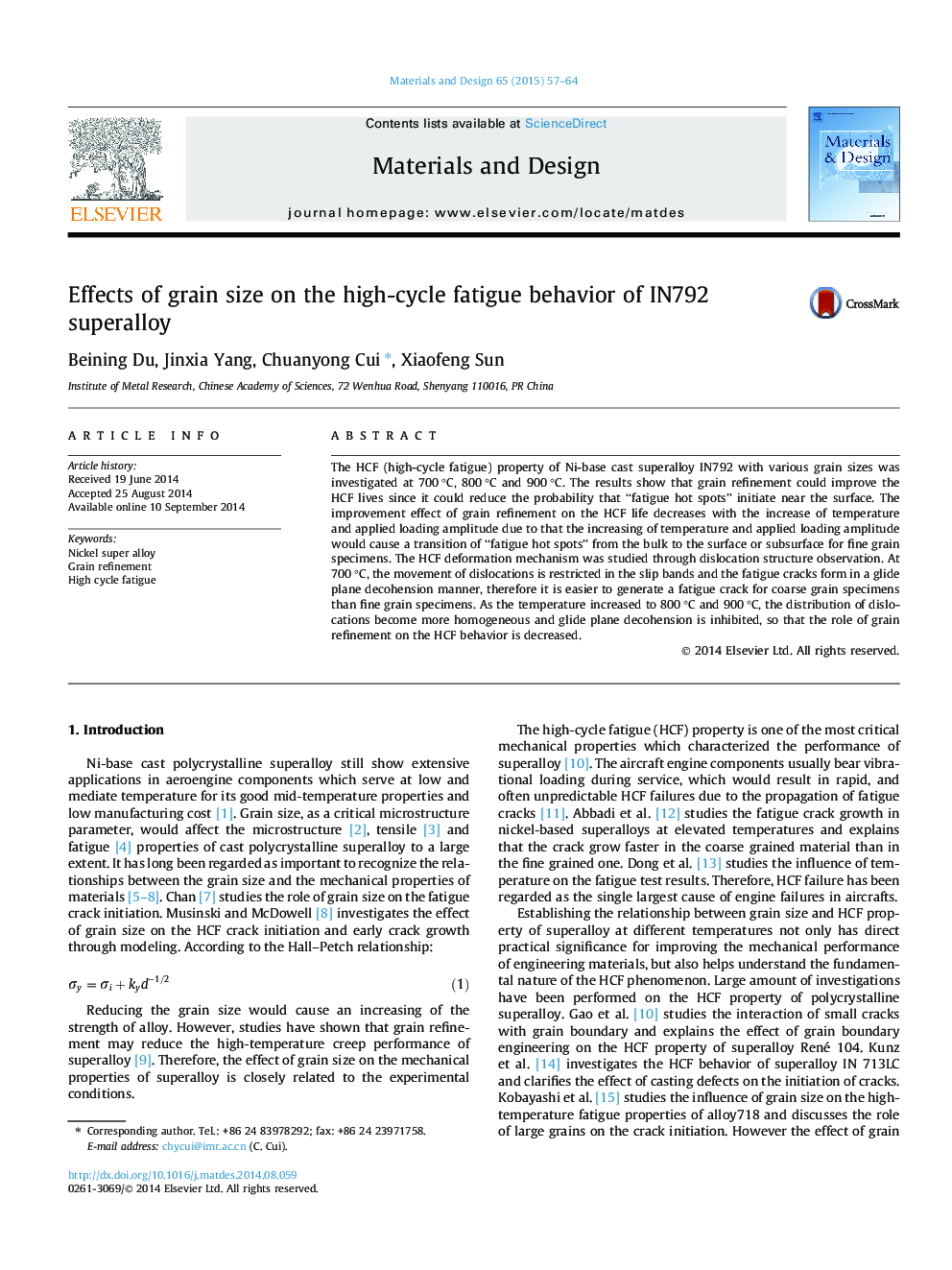| Article ID | Journal | Published Year | Pages | File Type |
|---|---|---|---|---|
| 828780 | Materials & Design (1980-2015) | 2015 | 8 Pages |
•The effect of grain size on the HCF behavior was studied.•The effect of grain size on “fatigue hot spot” was discussed.•The effects of temperature and stress on “fatigue hot spot” were analyzed.•The HCF failure mechanism was discussed.
The HCF (high-cycle fatigue) property of Ni-base cast superalloy IN792 with various grain sizes was investigated at 700 °C, 800 °C and 900 °C. The results show that grain refinement could improve the HCF lives since it could reduce the probability that “fatigue hot spots” initiate near the surface. The improvement effect of grain refinement on the HCF life decreases with the increase of temperature and applied loading amplitude due to that the increasing of temperature and applied loading amplitude would cause a transition of “fatigue hot spots” from the bulk to the surface or subsurface for fine grain specimens. The HCF deformation mechanism was studied through dislocation structure observation. At 700 °C, the movement of dislocations is restricted in the slip bands and the fatigue cracks form in a glide plane decohension manner, therefore it is easier to generate a fatigue crack for coarse grain specimens than fine grain specimens. As the temperature increased to 800 °C and 900 °C, the distribution of dislocations become more homogeneous and glide plane decohension is inhibited, so that the role of grain refinement on the HCF behavior is decreased.
